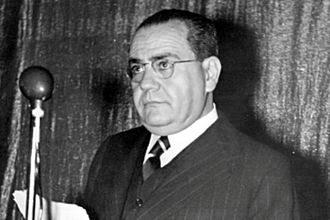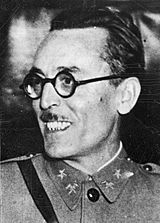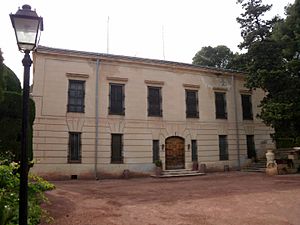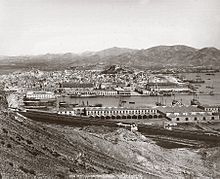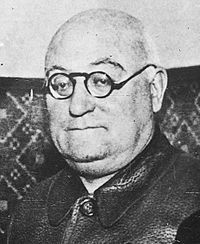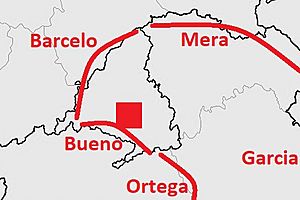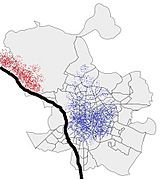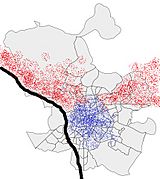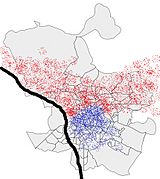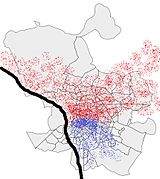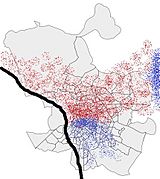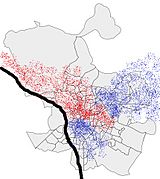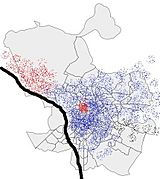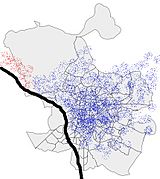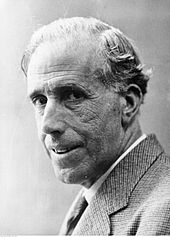Spanish coup of March 1939 facts for kids
Quick facts for kids Spanish coup of 1939 |
|||||||
|---|---|---|---|---|---|---|---|
| Part of Interwar period | |||||||
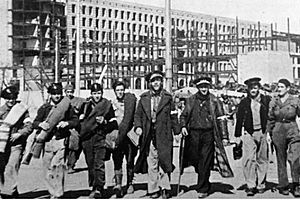 Casadista troops in Madrid |
|||||||
|
|||||||
| Belligerents | |||||||
(Negrinistas) |
(Casadistas, CND) |
||||||
| Commanders and leaders | |||||||
| Juan Negrín Luis Barceló Guillermo Ascanio |
Segismundo Casado José Miaja Cipriano Mera |
||||||
| Strength | |||||||
| minority of army and administration | majority of army and administration | ||||||
| Political support | |||||||
| Communists | Anarchists, Socialists | ||||||
| Casualties and losses | |||||||
| unclear; KIA estimates range from 250 to 2,000 | |||||||
The Spanish coup of March 1939, also known as Casado's coup, was a sudden takeover of power (a coup d'état) in the Republican zone of Spain. It happened against the government led by Juan Negrín. This event was organized by military leaders with help from Anarchists and Socialists. The main leader was Segismundo Casado, who commanded the Army of the Centre.
Those who planned the coup believed that Negrín's government was too influenced by Communists. They felt that continuing to fight against the Nationalists would only cause more deaths and suffering. Many thought the war was already lost. The military and some politicians wanted the coup to be the first step towards peace talks with the Nationalists. For the Anarchists and Socialists, their main goal was to remove the Communists from power.
The coup started on March 5, 1939. The rebels announced they had formed their own government, called the Consejo Nacional de Defensa (CND), based in Madrid. After a few hours of talks, Negrín's government, which was near Elda on the Levantine coast, decided not to fight back. They left Spain the next day. The rebels easily took control of most cities with little or no fighting.
The only exception was Madrid. Here, local Communist leaders, who did not know that their main party leaders wanted to avoid conflict, decided to resist. Communist-controlled army units came back from the front lines and took over most of Madrid. By March 9, they were close to the CND headquarters. However, Anarchist-controlled units also came from the front lines. They entered the city on March 10 and helped the rebels win within three days. For the next three weeks, the Republican zone was ruled by the CND.
Contents
Why the Coup Happened
By 1938, many important Republican leaders started to doubt Prime Minister Negrín's plan to keep fighting. They believed the Communist Party, influenced by the USSR, was pushing for this strategy. More and more people felt the war was already lost. They thought further fighting would only lead to more deaths and destruction.
Before 1939, some leaders, like President Manuel Azaña and Socialist leader Julián Besteiro, tried to start peace talks through normal political ways.
In early February, top military commanders quietly agreed that Negrín should be removed if he returned to the central zone. Key military figures involved included General José Miaja, General Manuel Matallana, General Leopoldo Menéndez, and Colonel Segismundo Casado. Around the same time, three major Anarchist groups, CNT, FAI, and FJL, spoke with Miaja. They wanted to create a "united anti-fascist organization" to take power. Their main goal was to sideline the Communists, not necessarily to start peace talks. Casado also talked with the Anarchist military commander, Cipriano Mera.
Since January, Casado had been in contact with Nationalist agents in Madrid. On February 15, he learned that Francisco Franco, the Nationalist leader, was ready to talk about the Republican surrender. For the next three weeks, Casado kept communicating with the Nationalists. He was determined to organize a coup against Negrín and start peace talks. Franco's side promised that Republicans not guilty of crimes would not be punished. The Nationalists also wanted the anti-Negrín coup to happen very soon.
Planning the Coup
In early 1939, Anarchists strongly opposed what they saw as a Communist dictatorship in the Republican zone. Their leader, Juan García Oliver, who was in Paris, said Negrín had to be removed. The Madrid Comité Regional de Defensa (CRD), a key Anarchist group, agreed. Its leaders, José García Pradas, Manuel Salgado Moreira, and Eduardo Val Bescos, led this effort. Most Anarchist groups supported them. A meeting on February 24 showed strong anger towards Communists. They wanted to fight "any sort of dictatorship" but were not sure about seeking peace with the Nationalists.
Socialist leaders Indalecio Prieto and Francisco Largo Caballero went to France in January 1939 and did not return to Spain. They were also very critical of Negrín and the Communist Party. The most respected Socialist politician still in Spain was Julián Besteiro. Since January 1939, he had been talking with military commanders about forming a new government focused on peace. The main Socialist group in Madrid, Agrupación Socialista Madrileña, with Besteiro, Wenceslao Carrillo, Angel Pedrero, and Carlos Rubiera, started direct talks with Casado on February 27 to set up an anti-Negrín government. Like the Anarchists, Socialists were against the Communists and had mixed feelings about peace talks with Franco.
The third group in the conspiracy was the military. General José Miaja, the highest-ranking officer, knew about the plot but was not very active. General Manuel Matallana, who had more real power, was an active plotter. Key local commanders included Rear Admiral Miguel Buiza (navy), General Leopoldo Menéndez (Army of Levante), and Casado. Casado was clearly the main leader of the plot. Some important commanders, like Colonel Domingo Moriones, Colonel Antonio Escobar, and General Ignacio Hidalgo de Cisneros, did not know about the plan.
Government's Response
When Prime Minister Negrín returned to Madrid on February 11, he and his team knew that many top military and government officials felt defeated. Some Communist leaders suggested replacing or removing these officials, including Miaja and Casado, because they seemed ready to give up. For unknown reasons, Negrín did not follow these plans. Instead, for about two weeks, he met with top commanders every few days.
By mid-February, Negrín was getting reports from the army intelligence (SIM) about suspicious meetings in Madrid. These meetings involved military leaders, possible Nationalist spies, politicians, and foreign diplomats. However, no action was taken. Plans to remove the Madrid SIM commander, Pedrero, were blocked by the Army of the Centre. On February 25, Negrín moved to what was called Posición Yuste. This was a temporary headquarters near Elda in the province of Alicante, far from Madrid. This move might have been to prevent his arrest, but it also left the plotters in Madrid free to act. He was last in Madrid on February 27.
On March 2, Negrín met with top military leaders, including Miaja, Matallana, Casado, and Buiza, at Posición Yuste. He thought about replacing Casado but decided not to. On March 3, the government announced new military appointments. Trusted Communist officers were placed in key positions along the Levantine coast. The same day, Negrín called Miaja, Casado, and Matallana to another meeting at Posición Yuste for March 5. However, these commanders were stalling for time, as they were finalizing their coup plans.
Events in Cartagena
Cartagena was the main Republican naval base, holding almost the entire navy. In early March, the Republican navy was strong, with three light cruisers, ten destroyers, and other ships. Negrín started to doubt the navy commander, Rear Admiral Buiza, and the political officer of the Cartagena base, a Socialist named Bruno Alonso. Negrín thought the navy would be vital for any large evacuation from the ports. So, on March 3, he replaced Alonso with Communist Colonel Francisco Galán, who arrived in Cartagena on March 4.
Some historians believe Casado and Buiza planned to take the fleet out to sea as part of the coup. Galán's arrival might have stopped these plans. On the afternoon of March 4, Galán was arrested by local plotters. Soon after, Nationalist plotters in the city began their own actions, seeing the split among Republicans. Fighting broke out among three groups. Buiza decided to fight the Nationalists first, so he released Galán. However, in the early hours of March 5, he ordered the fleet to prepare to sail.
On March 5, the situation in Cartagena became very chaotic. Nationalist rebels controlled the coastal battery and radio. They demanded the fleet sail out. Buiza controlled the fleet and part of the harbor, but he was under pressure from anti-Negrín forces. Government loyalist units entered Cartagena and fought Nationalist rebels, moving towards the harbor. Nationalist airplanes bombed the port, but their own rebel coastal battery mistakenly fired at them. Franco ordered his troopships to sail to Cartagena. In the middle of this chaos, around midday on March 5, the Republican navy sailed out to sea. Later that afternoon, government loyal troops took control of the city and port.
The National Defence Council (CND)
Some sources say the coup was first planned for March 4. This was sped up by Negrín's appointments on March 3, which were seen as a full Communist takeover. Until the last moment, the exact members of the rebel government, called the Council of National Defense (CND), were unclear. Casado had suggested Melchor Rodríguez as president, but he refused. Besteiro also refused.
When the main plotters met on the afternoon of March 5 to make a radio announcement, the CND's members were still not fully decided. They finally agreed that General Miaja, who was in Valencia at the time, would be president. After more talks about who would join, the names were agreed upon just before the broadcast at 10 PM. Everyone present knew that Casado was the real leader of the coup.
| Position | Office Holder | Representing |
|---|---|---|
| President | José Miaja Menant | Army |
| Foreign Affairs/Vice-president | Julián Besteiro Fernández | Partido Socialista Obrero Español |
| Interior | Wenceslao Carrillo Alonso-Forjador | Agrupación Socialista Madrileña |
| Defense | Segismundo Casado López | Army |
| Finance | Manuel González Marín | Confederación Nacional del Trabajo |
| Labor | Antonio Pérez García | Unión General de Trabajadores |
| Justice | Miguel San Andrés Castro | Izquierda Republicana |
| Education & Health | José del Río Rodríguez | Unión Republicana |
| Communications & Public Works | Eduardo Val Bescós | Confederación Nacional del Trabajo |
The radio broadcast included an official statement and speeches by Besteiro, Mera, San Andrés, and Casado. All speeches were a bit vague but strongly criticized Negrín and his government. They said Negrín was incompetent and served foreign interests (meaning Soviet interests), leading to a huge national disaster. They did not directly mention starting peace talks with the Nationalists. However, they spoke about "saving innocent people" and "humanitarian duties." They also said they were anti-fascists and supported resistance. Casado's last words were to Franco: "Peace or war is in your hands, not ours."
The Coup in Madrid
The CND sent two army divisions and other units led by trusted commanders into Madrid. However, Guillermo Ascanio, commander of the 8th Division west of the city, left the front line. On March 6, he took control of the northern and central parts of Madrid. Tank units and other reserve units near Torrejón de Ardoz also stayed loyal to Negrín and moved towards the city center from the east.
On March 7, the main rebel command center, called Posicion Jaca, was taken over. Most CND members left Madrid for Tarrancón. By March 8, the advancing loyalist troops were only a few kilometers from the Ministry of Finance, which was Casado's headquarters. On March 9, both sides talked and agreed to an informal ceasefire.
On March 10, Anarchist-controlled rebel reinforcements arrived. These troops, led by Cipriano Mera, had been on the front line near Guadalajara and Soria. They reached the eastern outskirts of Madrid and entered the eastern districts. By March 11, they took control of the city center. On March 12, the last areas of loyalist resistance were defeated.
Military Forces and Rebel Plans
Out of five army corps near Madrid, three were led by Communists or their supporters. The I Corps, in Sierra de Guadarrama, was led by Colonel Luis Barceló Jover. The II Corps, west of Madrid, was led by Colonel Emilio Bueno Nuñez. The III Corps, south of Madrid, was led by Colonel Antonio Ortega Gutiérrez.
The IV Corps, northeast of Madrid, was not under Communist control. It was led by an Anarchist, Cipriano Mera. The XVII Corps, in reserve, was led by Colonel Carlos García Vallejo, who was not linked to any specific party.
Overall, Communist-linked officers commanded three out of five corps, twelve out of eighteen divisions, and twenty-eight out of fifty brigades. About 45% of staff officers were also linked to the Communists. However, out of 73 political officers, only 27 were PCE members. Many others were Socialists or Anarchists.
The plotters made sure to have military units led by trusted officers in the city. The 65th Division, led by Socialist Gutiérrez de Miguel, was important. It was in the Chamartín and Castellana districts. The 2nd Assault Division, led by Socialist Piñeroa, was in the Salamanca and Chamberí quarters. An Anarchist-led unit was the 70th Brigade. The 8th and 152nd brigades of the Carabineros, also controlled by Socialists, were in southeastern Madrid.
March 5, 1939
After hearing the CND's radio broadcast on the evening of March 5, Communist leaders in Madrid met at their headquarters. This was in Villa Eloisa, a suburb northeast of the city.
There was no clear leader among the Madrid Communists. Vicente Pertegás seemed to take charge of their actions. Two senior party members, Arturo Jiménez and Domingo Girón, went to El Pardo, the headquarters of the II Corps. They wanted to convince Colonel Bueno to send troops into Madrid to stop the rebels. However, Bueno hesitated. Jiménez and Girón returned. Girón then tried to contact Barceló but was arrested by rebel troops. Another attempt was made to reach Guillermo Ascanio Moreno, a strong Communist and commander of the 8th Division.
PCE messengers had trouble reaching Ascanio's headquarters at El Pardo, as northern Madrid was patrolled by CND units. However, Ascanio decided to act on his own before being contacted. Some sources say he pulled back units from the front line near Majadahonda and Aravaca. Others claim he withdrew all three brigades of his 8th Division and sent them towards the Ministry of Economics near Puerta del Sol, which he believed was the CND headquarters.
March 6, 1939
Ascanio did not lead his division directly but went to Villa Eloisa. There, he was named the military commander for stopping the rebels. He planned to use units from Barceló's and Ortega's corps to attack Madrid from the north and south. However, communication with unit commanders was difficult, and some officers were unsure which side to support. Ascanio did manage to get the support of tank units in Torrejón de Ardoz and armored trains east and northeast of Madrid.
In the morning, the loyalist 18th Brigade reached Cuatro Caminos, a northern district close to CND headquarters. This unit, led by Pedro Fernández, fought against the 112th Mixed Brigade. Ascanio's men won and reached Calle de Ríos Rosas. By midday, Chamartín was controlled by loyalists. Around this time, Colonel Bueno of the II Corps decided to support the loyalists. Ascanio took command of the 8th Division again, which was now mostly in north-central Madrid. The division changed its attack direction, moving east towards Posición Jaca, the Army of the Centre's headquarters, where Ascanio hoped to trap Casado. Meanwhile, Barceló and Ortega remained inactive.
In the afternoon, Casado asked Mera to check the situation at Posición Jaca. Mera found it very difficult, especially with loyalist armored units approaching from the east. In the early evening, he called his IV Corps staff in Alcalá de Henares and ordered reinforcements. These did not arrive before midnight, and the defense began to fall apart. Some staff members retreated towards the city center.
March 7, 1939
In the early hours, the resistance at Posición Jaca collapsed, and the loyalists took over the bunkers. Three colonels were captured. In the morning, the loyalist column moved towards the city center and fought near Puente de Ventas.
The 42nd Brigade, led by Communist Manuel Fernández Cortinas, left its front-line positions at Casa de Campo on Bueno's orders. It also moved towards the city center from the west. Cortinas tried to get the neighboring 40th Brigade to join, and they eventually did. Both brigades moved southeast along the Manzanares river. In the afternoon, they were close to Palacio Real and Teatro de la Opera, important rebel locations. The palace had a telephone exchange, and the theater stored weapons.
The loyalist attack from the east was less successful. Their plan was to meet the 42nd Brigade near Plaza de Cibeles. But advancing from Canillejas towards Ventas, they faced heavy fighting and made slow progress. In the afternoon, Barceló, who now supported the loyalists, appeared at Posición Jaca. He questioned prisoners and gave orders.
Even though the loyalist attack slowed down, they kept moving forward. They were approaching the rebels from three directions: northwest, north, and northeast. Despite rebel attempts to bring in more troops, the CND members were in growing danger. Most CND members, including Miaja but not Casado, left Madrid later that day. They set up their new headquarters in Tarrancón, about 80 km southeast of the capital. Very late that night, the loyalists took control of Palacio Real and Teatro de la Opera.
March 8, 1939
In the morning, the column led by Cortinas moved from Palacio Real east towards Paseo de la Castellana. Other loyalist units advanced from the north along the Paseo. Their goal was to surround the defenders from the 65th Division. By midday, loyalist troops reached Plaza de Cibeles. Rebel troops started wearing white armbands to tell themselves apart from the loyalists.
Also in the morning and early afternoon, loyalist units from the northeast finally took control of Ventas. This was partly because the 8th Brigade of the Carabineros switched sides and joined the Communist-controlled units. Moving along Calle de Goya, they later joined forces with units advancing from the north at Puerta de Alcalá.
The rebel units that faced the main Communist attack in central Madrid were mostly Socialist units from the 65th and 2nd Assault Divisions. Colonel Armando Alvárez of the Guardia de Asalto played a key role in coordinating the rebel defense.
By the afternoon, the rebels were in a very bad position. Their headquarters at the Ministry of Finance was only about 1.5 km from the nearest loyalist units. Even though the way south was controlled by the Casadistas, there was a real threat that their command center could be cut off at any moment. Loyalist artillery at Puerta de Alcalá began shelling the Ministry of Finance buildings.
March 9, 1939
During the night, messengers from the Communist Party's national headquarters in Elda reached the Madrid Communist command center in Villa Eloisa. They brought orders to stop fighting and prepare to leave or go into hiding. The news also broke that the PCE executive had left Spain on March 6–7, and that the Casadistas had won everywhere else in the Republican zone except Madrid.
The Madrid Communist leaders were confused. A heated debate followed. Most members of the local party command decided to follow the instructions. One source says an offer was made to the CND to exchange prisoners and possibly for the PCE to join the CND. Another version says the ceasefire offer came from Colonel Ortega, who remained neutral and mediated between the CND and the PCE. According to this view, Casado wanted to gain time for reinforcements to arrive. By midday on March 9, a ceasefire was in place, and both sides reorganized their units.
Jesús Hernandez, a member of the Madrid Communist leadership, refused to accept the party's orders. With a group of colleagues, he announced the formation of a new PCE politburo, rejecting the authority of leaders like Díaz and Ibárruri, who were already in France or Algeria. He issued a strong statement telling commanders not to give up power.
Nationalist officers at Casa de Campo noticed some opposing units withdrawing. They told their superiors, suggesting a quick advance. However, Franco's army ordered them to hold their positions.
During the day, reinforcements called by Mera three days earlier were organized. These were mainly the 14th Division and the 12th Division. Both units traveled about 60 km and arrived at Torrejón de Ardoz, on the eastern outskirts of Madrid, during the night.
March 10, 1939
In the morning, the first units of the rebel 14th and 12th Divisions reached Puente de San Fernando on the Jarama river. Despite the earlier Communist decision to avoid fighting, Communist-controlled units, mainly the 44th and 18th Brigades, resisted them. The shootout lasted a few hours. Eventually, the Anarchist-dominated divisions took control of the bridge and advanced. However, at this point, loyalist artillery, deployed on Alto de Ventas hill, started firing at the advancing rebel units. They scattered, and their advance stopped.
There was little fighting in the government quarter. The loyalist advance stopped, and the rebels were only able to defend. Communist engineering units tried to dig a tunnel and plant explosives near the Ministry of Finance but failed. Learning about Mera's troops advancing from the east, elements of the 42nd Brigade were sent east as reinforcements in the afternoon.
During the late evening and early night, the rebel 12th Division moved west and approached Alto de Ventas and the bunkers of Posición Jaca. The Communists decided not to resist and left the area, which was then taken by Anarchist-controlled units. They were now about 10 km from Casado's headquarters. The Communist-controlled units were now in a difficult position, facing the 65th Division from the south and Mera's troops from the northeast.
March 11, 1939
From early morning, the rebel IV Corps troops, mainly the 12th and 14th Divisions, began an attack along a 10-km front line. This line stretched from Fuencarral in the north, Chamartín in the center, Hortaleza, Ciudad Lineál, and Ventas in the east, towards the government quarter in the center. The Communist leaders left Villa Eloisa, which was soon taken by the rebels, and went into hiding.
The situation varied greatly in different areas. Some sections saw fierce hand-to-hand combat, while in other areas, troops from opposing sides became friendly. For example, the suburb of Fuencarral changed hands several times. First, it was taken by Casadistas, then by anti-Casadista units, and then again by Casadistas. In Ventas, advancing Anarchist-controlled units sent negotiators. They carried tri-color flags and shouted "vivas to the Republic," trying to convince their opponents that fighting was pointless.
The 42nd Brigade (loyalist) began to retreat from Cibeles to the northwest, across Nuevos Ministerios towards the Manzanares river. In the afternoon, heavy fighting took place north of the city center, with both sides using artillery and mortars. By evening, there were only small pockets of Communist resistance in the government quarter. Units that had tried to enter the Casadista center failed to retreat and were surrounded by Mera's advancing divisions. By dark, almost all of Madrid was controlled by the CND. Major loyalist strongholds were only Nuevos Ministerios in the center and the area around El Pardo in the north.
March 12, 1939
The last areas of loyalist resistance, especially Nuevos Ministerios and El Pardo, were first isolated and then attacked by CND troops. Some loyalists were defeated, but most surrendered. The Servicio de Inteligencia Militar (SIM), the military intelligence service in Madrid, which was controlled by Socialists, began searching for Communist members across the city.
The CND published its response to the Communist Party's proposal from three days earlier. The Council rejected all Communist suggestions and demanded unconditional surrender. It vaguely promised "to judge the events of the last days without strong feelings." It noted that all Communist prisoners not guilty of crimes would be freed. It also said the council would listen to further Communist proposals but reserved the right to make any necessary personal decisions.
The same day, Palmiro Togliatti, who was in hiding in Valencia and was the highest Communist authority in Spain, issued a response. He stated that since the CND promised no harsh punishments, the Communist Party was ready to cooperate. He spoke of "sacrifice, heroism, and discipline" for the country. His wife delivered this message to the Madrid Communist leaders that evening. Communist resistance stopped, and the battle for Madrid was over. Most determined commanders, like Ascanio, were already arrested. Others, like Barceló, Bueno, or Ortega, were captured the next day or soon after.
The Coup Beyond Madrid
When Casado's coup happened, Republicans controlled about 130,000 square kilometers (26% of Spain) and nine provincial capitals besides Madrid. Wenceslao Carrillo, the CND's Minister of Interior, was key to the coup's success outside Madrid. He called local governors, convincing almost all of them (except Alicante) to support the rebels. General Leopoldo Menéndez, Negrín's newly appointed chief of General Staff and part of the plot, did similar actions within the military. As a result, most provinces fell to the CND easily. There was only minor resistance in Ciudad Real, brief attempts near Valencia, and chaos in Cartagena.
- Albacete: The local governor and military commander supported the CND. Their takeover led to Negrín's departure from Spain on March 6.
- Alicante: The local officials were loyal to the government at first. But after Negrín and his cabinet left Spain on March 6, and the Communist Party leaders left on March 7, they saw no reason to resist. The city fell to the Casadistas on March 8.
- Almería: Local UGT, PSOE, and CNT groups supported the CND. After some confusion, the Communist Party offered no resistance. Some of their offices were attacked, and arrests began. When local Communist leaders asked the governor to stop the persecution, they were arrested.
- Ciudad Real: General Antonio Escobar Huerta, who first supported Negrín, changed his mind and joined the CND. Some Communist groups resisted in a building called Palacio Rojo. After some fighting, including armored vehicles, the building was taken by the rebels. Some people lost their lives. Most key Communist officials were arrested. Some army units also tried to resist but eventually gave up.
- Cuenca: The local military commander, José Laín Entralgo, a Communist, was told not to resist. Despite this, there was some minor fighting before the Casadistas took control.
- Guadalajara: The Communist governor, José Cazorla, was tricked by Mera and arrested. No fighting was reported here.
- Jaén: About 70 important Communists were quickly arrested, and the city immediately came under CND control.
- Murcia: The governor followed orders from Wenceslao Carrillo and arrested most leading Communists. No fighting was reported except in Cartagena. The naval base was very chaotic, with pro-Negrín, pro-Casado, and pro-Franco groups controlling different parts. Cartagena eventually came under CND control by March 10.
- Valencia: General Menéndez, the new head of General Staff, was based in Valencia. He was part of the Casadista plot from the start and easily ensured CND control over the city and province. An initial plan by Communist-controlled units to resist failed.
Casualties
About 30,000 soldiers fought in or around Madrid. The exact number of people who lost their lives or were injured is not clear. It is often said that about 2,000 people were killed in Madrid. Some sources say 2,000 is the total number of casualties, including those injured. One study suggests 233 people were killed and 543 were injured in Madrid. The Madrid Civil Registry also reports a similar figure of 243 deaths. There were some deaths in Cartagena, but because Nationalists were also fighting there, it's hard to say if they were all due to the CND coup.
The CND in Power
After the coup succeeded, the CND began a large-scale removal of Communists from power. Many who held government or army positions were removed, and many were arrested. Some estimates say up to 15,000 people were arrested. The Communist Party was not officially banned, but sometimes all members of local leadership groups were arrested at once. The number of killings is not clear. Few executions were done through official legal processes. However, some people later claimed that hundreds of Communist prisoners were killed in prisons or temporary detention centers. Those who survived were held for three weeks before being handed over to the Nationalists in late March 1939. The CND also took symbolic steps, like removing the red star from military uniforms. Anarchist and Socialist newspapers strongly criticized Negrín and the Communists.
Differences within the CND appeared almost immediately after the coup. Anarchists thought they should keep resisting the Nationalists to get the best surrender terms. The military wanted to arrange a ceasefire as soon as possible. To remove the only person with real power, Casado suggested Mera take command of the Army of Extremadura, but Mera refused. Casado continued his unofficial talks with the Nationalists to achieve an honorable peace. On March 23, two of his envoys flew to Burgos. They suggested a staged surrender combined with an evacuation for anyone who wanted to leave Spain. The Nationalists demanded immediate and unconditional surrender, with vague promises that people not guilty of criminal activity would not be punished. The CND was uneasy and asked for confirmation, sending the envoys to Burgos again on March 25. Few talks happened. Despite this, on March 26, the CND ordered no resistance if the Nationalists advanced, which they did a day later. From March 26–28, all CND members except Besteiro left Madrid for the Levantine coast.
The CND tried to secure government money and papers stored abroad, possibly to help with an organized evacuation. On March 23, Carrillo ordered governors to prepare for evacuation, but no details were given. Publicly, CND officials said ships were being prepared for everyone. However, there was no organized plan. When Nationalist troops advanced, tens of thousands of people began to flee chaotically eastward. Miaja and Mera flew from Alicante to Oran on March 29. Casado left Gandia on a British warship in the early hours of March 30. Alicante fell to the Nationalists on March 31, and the Republican zone no longer existed.
|
See also
 In Spanish: Golpe de Estado de Casado para niños
In Spanish: Golpe de Estado de Casado para niños


